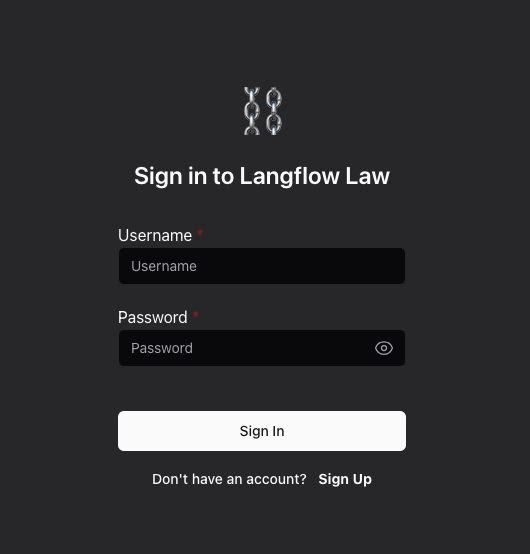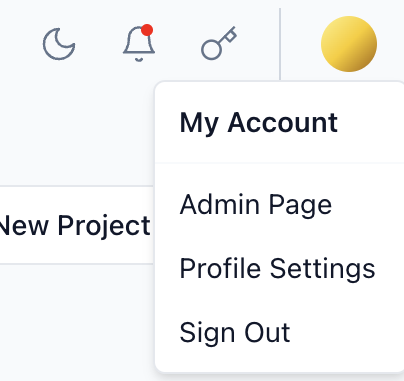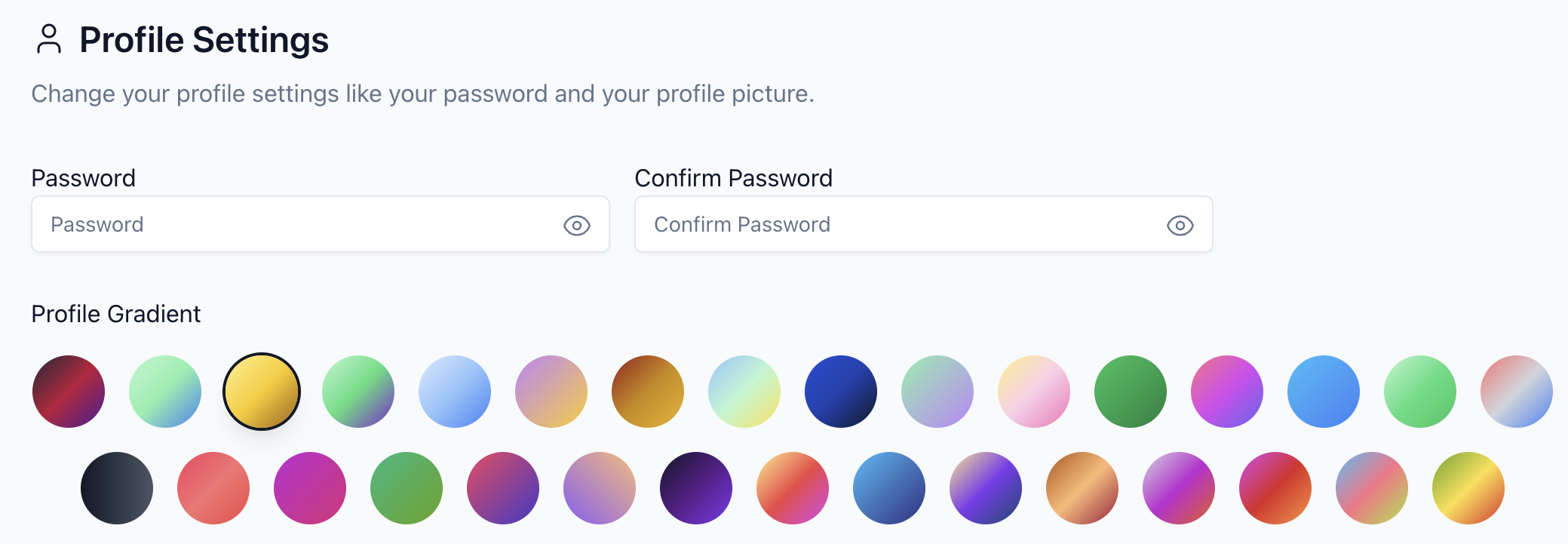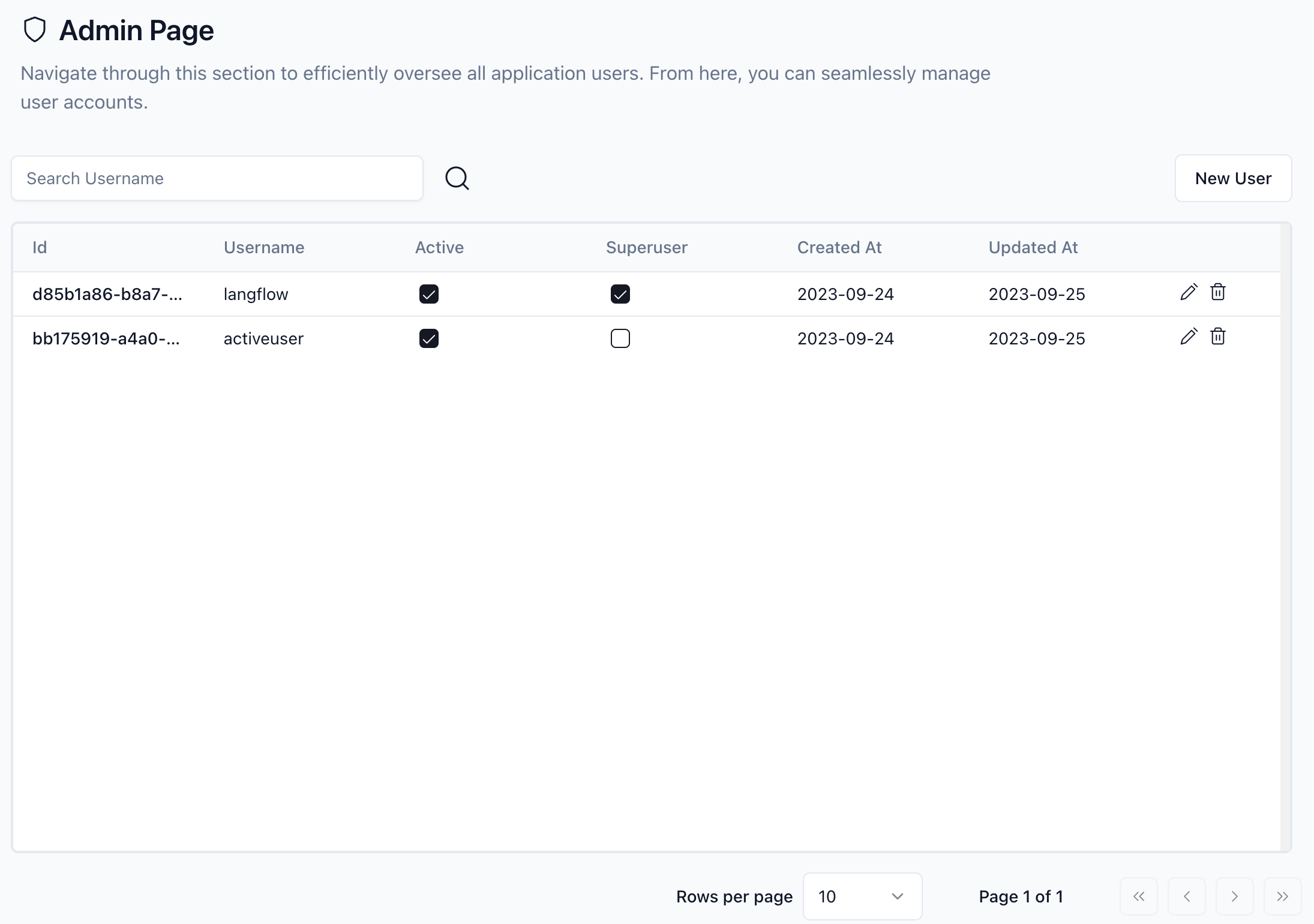Authentication
Sign Up and Sign In
The login functionality in Langflow serves to authenticate users and protect sensitive routes in the application. Starting from version 0.5, Langflow introduces an enhanced login mechanism that is governed by a few environment variables. This allows new secure features.
Environment Variables
The following environment variables are crucial in configuring the login settings:
LANGFLOW_AUTO_LOGIN: Determines whether Langflow should automatically log users in. Default isTrue.LANGFLOW_SUPERUSER: The username of the superuser.LANGFLOW_SUPERUSER_PASSWORD: The password for the superuser.LANGFLOW_SECRET_KEY: A key used for encrypting the superuser's password.LANGFLOW_NEW_USER_IS_ACTIVE: Determines whether new users are automatically activated. Default isFalse.
All of these variables can be passed to the CLI command langflow run through the --env-file option. For example:
_10langflow-law run --env-file .env
It is critical not to expose these environment variables in your code repository. Always set them securely in your deployment environment, for example, using Docker secrets, Kubernetes ConfigMaps/Secrets, or dedicated secure environment configuration systems like AWS Secrets Manager.
LANGFLOW_AUTO_LOGIN
By default, this variable is set to True. When enabled (True), Langflow operates as it did in versions prior to 0.5—automatic login without requiring explicit user authentication.
To disable automatic login and enforce user authentication:
_10export LANGFLOW_AUTO_LOGIN=False
LANGFLOW_SUPERUSER and LANGFLOW_SUPERUSER_PASSWORD
These environment variables are only relevant when LANGFLOW_AUTO_LOGIN is set to False. They specify the username and password for the superuser, which is essential for administrative tasks.
To create a superuser manually:
_10export LANGFLOW_SUPERUSER=admin_10export LANGFLOW_SUPERUSER_PASSWORD=securepassword
You can also use the CLI command langflow-law superuser to set up a superuser interactively.
LANGFLOW_SECRET_KEY
This environment variable holds a secret key used for encrypting the superuser's password. Make sure to set this to a secure, randomly generated string.
_10export LANGFLOW_SECRET_KEY=randomly_generated_secure_key
LANGFLOW_NEW_USER_IS_ACTIVE
By default, this variable is set to False. When enabled (True), new users are automatically activated and can log in without requiring explicit activation by the superuser.
Manage superusers with the CLI
Langflow provides a command-line utility for managing superusers:
_10langflow-law superuser
This command prompts you to enter the username and password for the superuser, unless they are already set using environment variables.
Sign in
With LANGFLOW_AUTO_LOGIN set to False, Langflow requires users to sign up before they can log in. The sign-up page is the default landing page when a user visits Langflow for the first time.

Profile settings
Once signed in, you can change your profile settings by clicking on the profile icon in the top right corner of the Langflow dashboard. This opens a dropdown menu with the following options:
-
Admin Page: Opens the admin page, which is only accessible to the superuser.
-
Profile Settings: Opens the profile settings page.
-
Sign Out: Logs the user out.

Select Profile Settings to change your password and your profile picture.

Select Admin Page to manage users and groups as the superuser.

